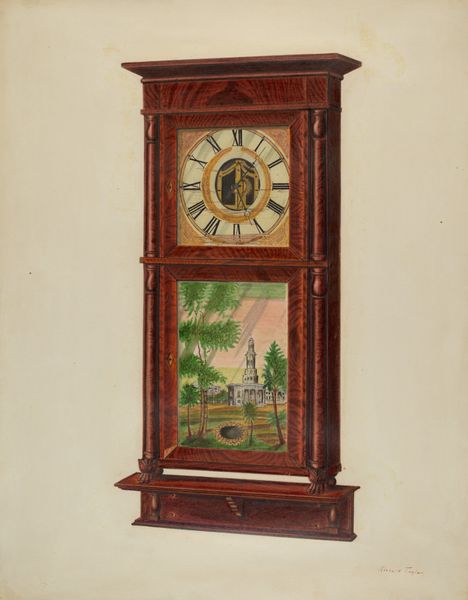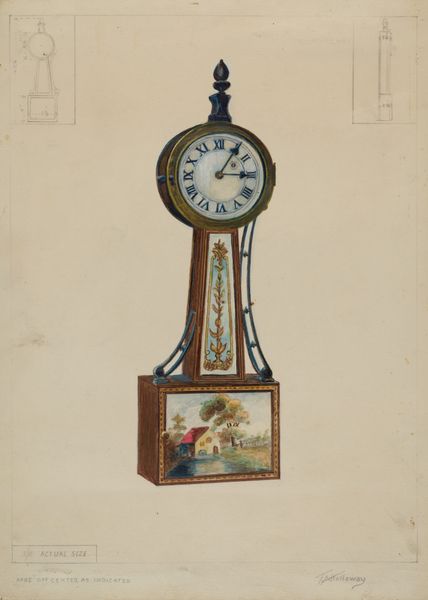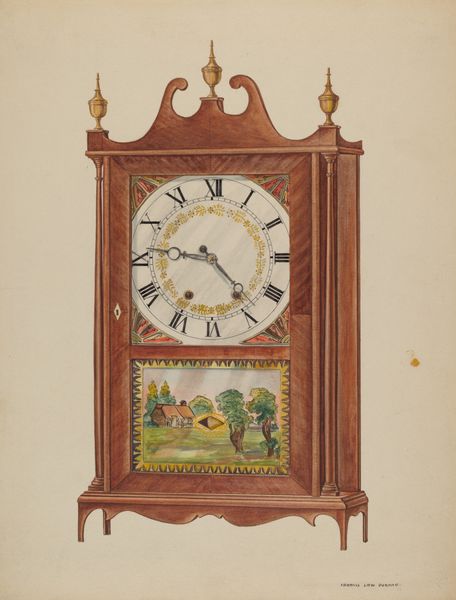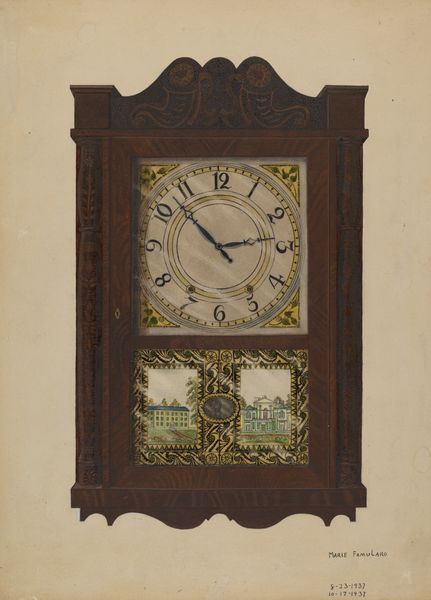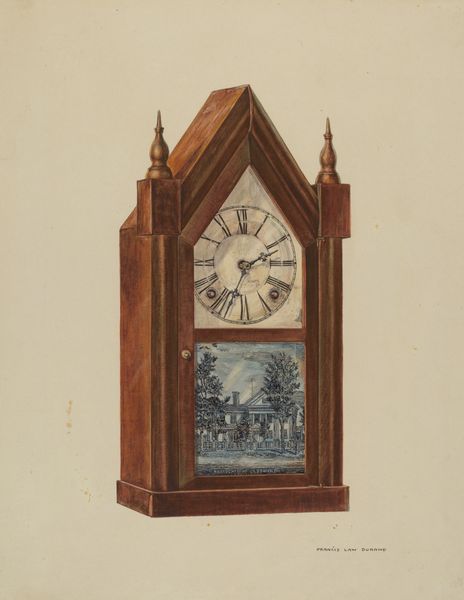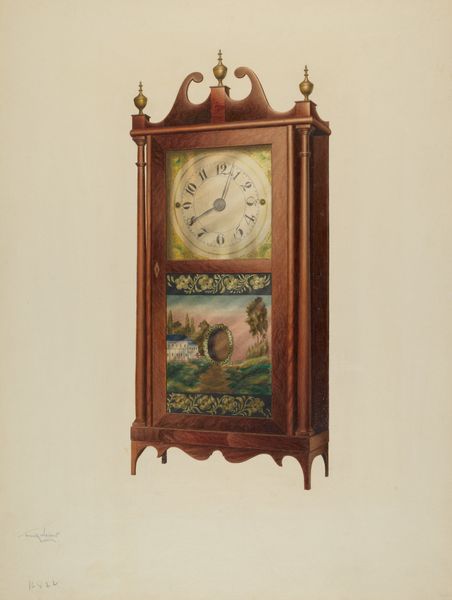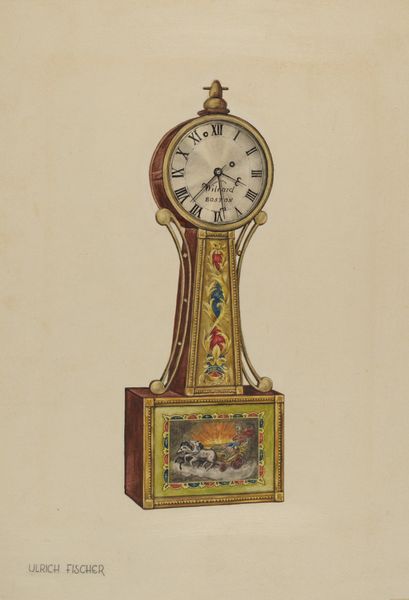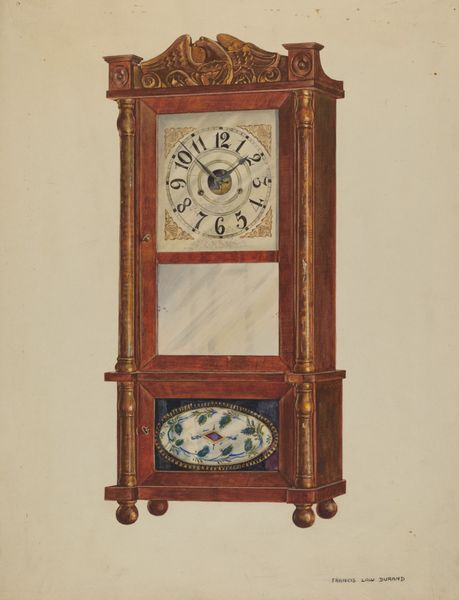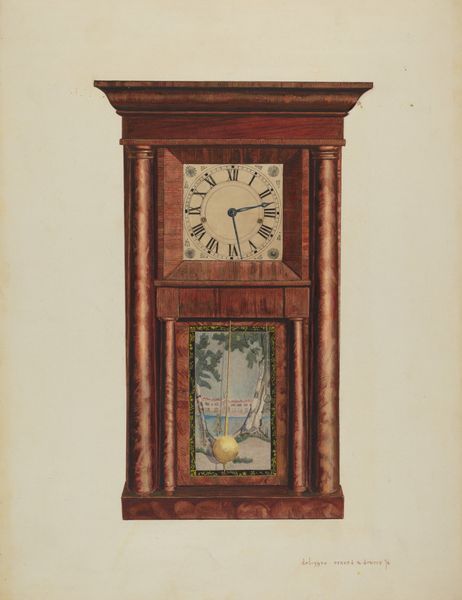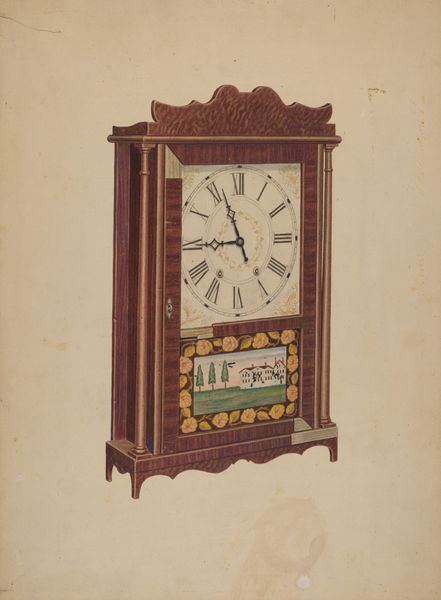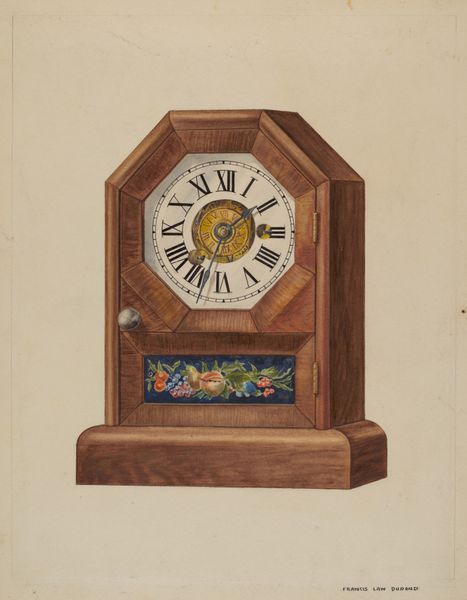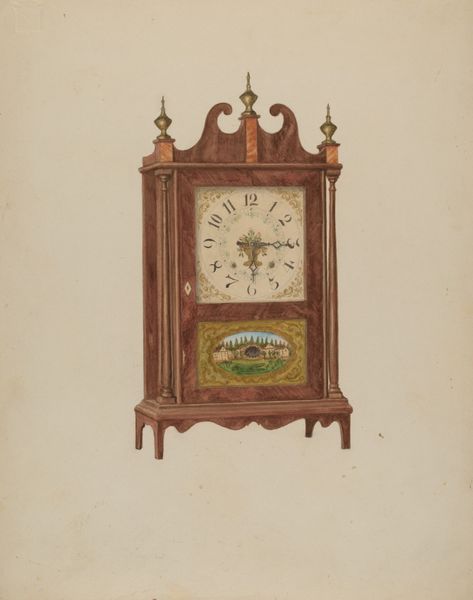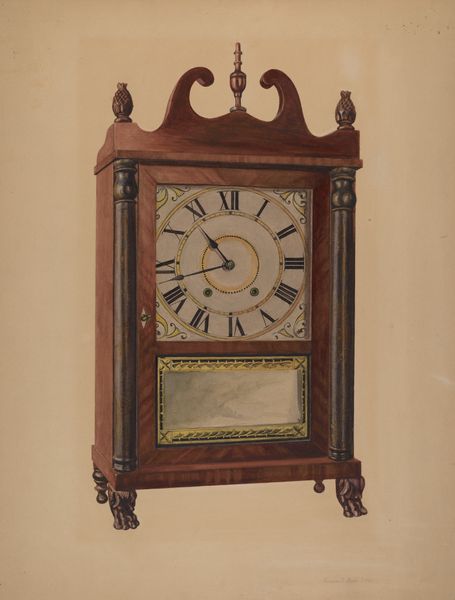
drawing, coloured-pencil
#
drawing
#
coloured-pencil
#
oil painting
#
coloured pencil
#
watercolour illustration
#
academic-art
#
watercolor
Dimensions: overall: 35.5 x 29.1 cm (14 x 11 7/16 in.) Original IAD Object: 32 1/2" tall x 19"wide (max.)
Copyright: National Gallery of Art: CC0 1.0
Editor: This is Francis Law Durand's "Mantel Clock," from 1938, a colored-pencil drawing. It's charming, but a little... wistful? The clock face is bordered by these lovely roses. How do you interpret this work, considering its context? Curator: The sentimentality you’re picking up on is interesting, given the period. The 1930s were, of course, shaped by the Great Depression, a period where nostalgia for an idealized past became prominent in art and popular culture. Consider the landscapes within the clock: idealized visions of a rural, perhaps antebellum South, juxtaposed with the measurement of time itself. What does this combination suggest to you about societal anxieties of the era? Editor: Maybe a yearning for simpler times, a world untouched by economic hardship and the rapidly changing social landscape? Almost like a dream being projected onto an object of everyday life, in a very institutionalized form of course. Curator: Precisely. And note the specific architectural style depicted. The idealized house is classical, reminding us of a very controlled world, evoking power and permanence. And consider also the function of a mantel clock. A display piece, certainly, but also a symbol of domestic order. What do these combined elements suggest about the relationship between private desires and public roles of the era? Editor: So it's not just about individual nostalgia, but a collective imagining of order and stability projected onto the domestic sphere, made even more complicated by race and class? I wouldn't have caught all that on my own. Curator: Exactly! By examining the symbolism and socio-political context, we gain a deeper understanding of its public role and underlying anxieties. Editor: It’s incredible how a simple drawing of a clock can reveal so much about an entire era. I'll definitely look at things with a more critical eye.
Comments
No comments
Be the first to comment and join the conversation on the ultimate creative platform.
